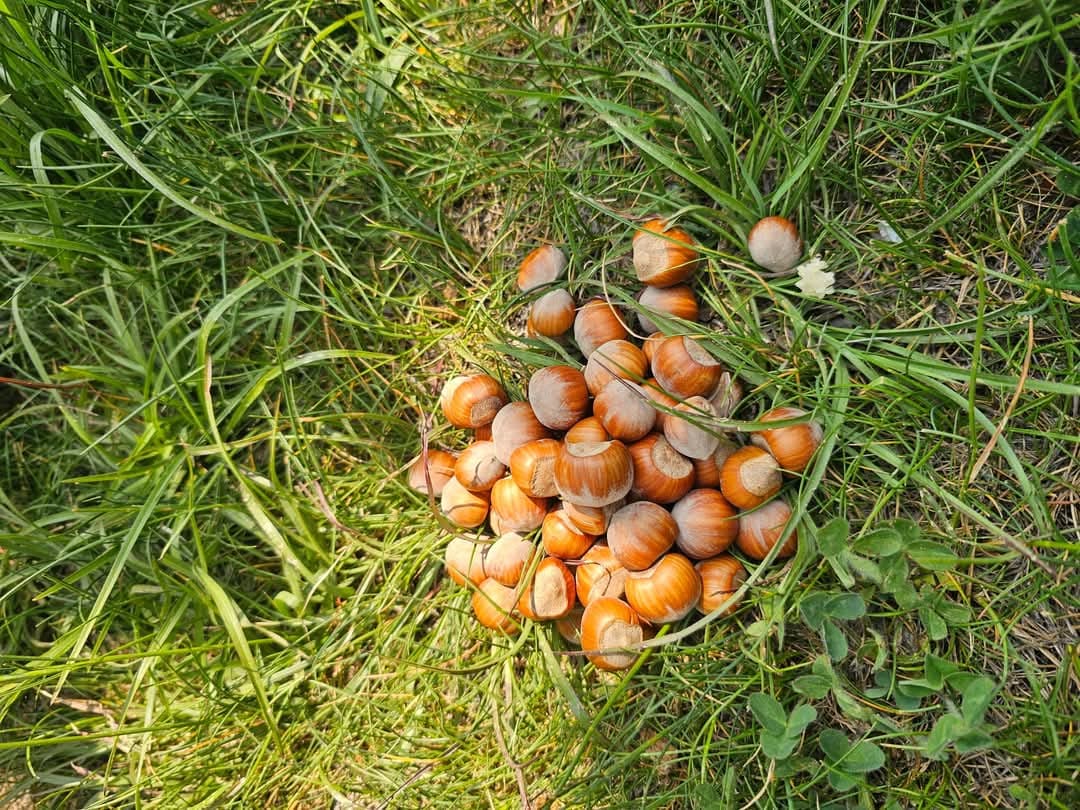Umaisar Gull Ganie
Anantnag, May 26: Hazelnut cultivation is rapidly gaining ground in the high-altitude villages of Kokernag in South Kashmir’s Anantnag district, driven by promising market returns and expanding demand.
Around 200 kanals of land have been brought under cultivation, with about 3,500 plants thriving at the government-run farm in Lehenwan.
Locally known as virin, hazelnuts are a valuable yet underutilized nut variety in Kashmir’s horticultural landscape. They grow on hazel trees (genus Corylus) and thrive in cooler, temperate climates—conditions well-suited to Kashmir’s mountainous regions. While less common than walnuts or almonds, wild hazelnut trees are found in areas like Kupwara and Baramulla.
According to the news agency—Kashmir News Observer (KNO), Hazelnuts are rich in protein, healthy fats, vitamins E and B, and essential minerals such as magnesium and manganese.
Due to their nutritional profile, they hold strong potential for use in local confectionery, traditional desserts, and herbal medicine. Benefits include improved heart health, better digestion, and a strengthened immune system.
The planting season for hazelnuts runs from December to April, with harvesting in September. The trees typically begin bearing fruit after four years.
The Lehenwan government farm, spread over 200 kanals, currently produces about 30 quintals of hazelnuts annually from its 3,500 plants.
Hazelnut cultivation is grown in several high-altitude villages of Larnoo, including Seeri, Katri Matihandoo, Dravey, Guridraman, Gadvail, and Dandipora, in addition to Lehenwan.
“Economically, hazelnut cultivation can open new avenues for agri-business and exports in Kashmir,” said an official. “With rising global demand—particularly in chocolate, bakery, and cosmetic industries—farmers can benefit from diversifying their crops.”
The official said that government initiatives and agricultural research institutions could further support the sector through training, high-yield grafting techniques, and market linkages—helping hazelnuts become a profitable niche crop for the Valley.
A local farmer said that three varieties of hazelnuts are being grown due to their high market value. “We have cultivated them at home and on a large scale in Lehenwan,” he said. “Farmers are earning well from hazelnuts due to strong market demand.”
He said that the crop requires minimal use of pesticides and other inputs compared to traditional fruits.
Talking to KNO, SDM Kokarnag, Suheel Ahmad Lone said that hazelnuts were introduced about 30 kilometers from Kokernag in 1989 under the Indo-Italian Project.
They were first cultivated in Lehenwan over 16 hectares of land along with walnuts and other nut varieties. The aim was to diversify farming practices and provide farmers with more profitable alternatives to traditional crops.
“Under the Centre of Excellence for Nut Crops, a new project worth Rs 12 crore is underway, introducing more nut varieties,” he said. “Traditional nut species are being phased out and new hybrid varieties like Macdonald nuts, pistachios, and hazelnuts are being introduced. The goal is to provide farmers with an alternative and sustainable source of income. Nurseries, research institutes, and training centers are also being developed at the farm.”
He said that the farm spans 16 hectares, with half the area now dedicated to cultivating new varieties.
“Farmers still have limited knowledge about hazelnuts since the variety has been imported from outside the state. Currently, 64% of the world’s hazelnut cultivation happens in Turkey, while in India, hazelnuts are grown in Himachal Pradesh and Kokernag,” Lone said.
He further said hazelnuts have high calorific value, zero cholesterol, and are known to benefit health conditions such as obesity, high cholesterol, heart disease, and dementia.
“In the past, hazelnuts had low market value due to limited awareness and acceptability. But in recent years, local industrialists have started purchasing them, resulting in higher returns. Hazelnuts are now a key ingredient in chocolates, coffee, and even have medicinal value, leading to increased production,” Lone said.
“We are looking to explore high-altitude areas for expansion. We hope the Horticulture Department will implement this project in other higher regions as well, so that more farmers can benefit,” SDM added—(KNO)




